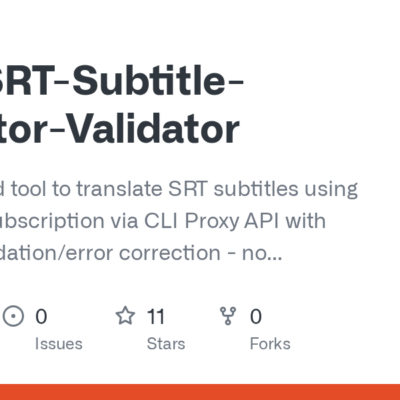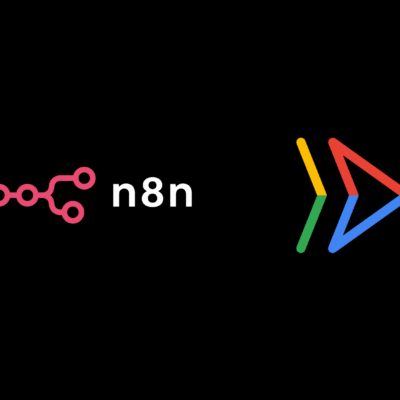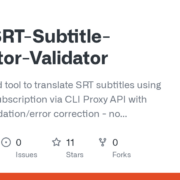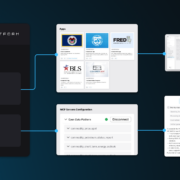I have been in business for 14 years. Across my portfolio companies, we spend tens of millions of dollars every single year on paid advertising. Because we are risking real money—our own money, not just client budget—we have developed a rigorous set of internal standards for what makes an advertisement work.
Over that time, I’ve compiled a specific checklist of “hacks” or principles that we use whenever we write copy. Whether it’s an email, a landing page, or a video script, these elements are non-negotiable.
Writing copy isn’t just about being creative; it’s about psychology and leverage. Below, I’m going to share 11 of the most powerful high-converting copywriting tips that I use to generate revenue. Consider this your cheat sheet for writing ads that actually sell.
1. The Headline is Everything (The 80/20 Rule)
Headlines come first for a reason. David Ogilvy famously said that once you’ve written your headline, you’ve spent 80 cents of your advertising dollar.
It feels unfair that a single phrase, a handful of words, or a short question carries so much weight. However, the headline is the biggest lever you have. If you can move your click-through rate from 1% to 3% just by changing the headline, you have effectively tripled the number of people entering your funnel. There are very few other places in your business where you can get a 3x lift with one small change.
How to Write a “Banger” Headline
The best advertisers obsess over the hook. If you have a winning hook, you use it until it breaks. When I’m stuck, I look for three things:
- Curiosity is King: Does it make them wonder what the answer is?
- Different is Ideal: Does it look unlike anything else in their feed?
- Sexy Works: Is it appealing and desirable?
A great way to cheat is to “steal like an artist.” Look at organic content or ads in completely different industries. If you see a travel ad with a killer structure, can you adapt that for your B2B software? Look at the first three seconds of viral videos—what are they saying? That’s your headline inspiration.
2. Say What Only You Can Say (Proof Over Promise)
We live in an era where AI can write “good” copy. An AI can promise the moon. It can say, “We are the best.” But there is one thing an AI cannot do: it cannot have done something in the real world.
Competitors can copy your offer. They can copy your pricing. But they cannot copy your proof.
If you are the only triple black belt in your city, say so. If you are the only agency that has specifically helped vegan powerlifting moms over 35, say so. You want to be one of a kind. The beauty of this strategy is that you get to define the pond in which you are the “only” one.
Verification is the Future
In a world where trust is diminishing because people don’t know what is real, facts and history are your defense. No one can take your story away from you. When you write copy, lean heavily into the specific things you have actually done. Proof will always outperform promise.
3. Call Out Your Audience (And Who You Don’t Want)
You never want to advertise to the masses. You want to advertise to one specific person. When someone reads your ad, they should feel like you are reading their diary.
One of the bravest and most profitable things you can do is call out who you are not looking for.
- “If you make less than $250,000 a year, this isn’t for you.”
- “If you are looking to lose 5lbs quickly, go elsewhere. We only help people who need to lose 30lbs or more.”
Most people are terrified to say “no” to potential revenue. But when you repel the wrong people, you magnetically attract the right people. By saying “This is not for X,” the person who is “Y” thinks, “Wow, this is specifically for me.”
The Levels of Awareness
As you target your audience, remember where they are in the buying journey:
- Unaware: You need a curiosity hook.
- Problem Aware: “Do you wake up twice a night to pee?”
- Solution Aware: “Have you tried supplements that didn’t work?”
- Product Aware: “Have you tried our specific method?”
Regardless of the level, specificity wins. Don’t be vanilla. If you try to be everything to everyone, you end up being nothing to no one.
4. Always Give a “Reason Why”
The word “because” is one of the most influential words in the English language.
There is a famous study regarding people waiting in line to use a copy machine. When someone asked to cut in line saying, “Can I cut in front of you because I have to make copies?”—a completely redundant reason—compliance went up almost as much as if they had a legitimate emergency.
People just need a reason. It satisfies the brain’s need for logic.
- “We are doing this discount because it’s our CEO’s birthday.”
- “We are closing the doors because we only have 100 spots.”
If you act like a “fraternity party planner,” any reason is a good reason to party. It’s Tuesday? Great reason. It’s a full moon? Great reason. Just make sure you tie that reason to the next step you want them to take.
5. Damaging Admissions (The “But” Framework)
This is arguably my favorite tactic. It is incredibly disarming.
A “damaging admission” is when you openly admit a flaw or a negative aspect of your product or service. When you admit bias or a flaw, you gain immediate trust. Why? Because people are used to marketers lying to them. When you tell the truth about something bad, they believe you when you tell the truth about something good.
How to Structure It
Use the word “But” to pivot. The part of the sentence that comes after the “but” is the part the brain focuses on.
- Weak: “Our markers last 4x longer than the competition.” (Okay, says who?)
- Strong: “These markers smell absolutely terrible, but they last 4x longer than any other marker on the market.”
By owning the flaw (the smell), the benefit (longevity) becomes a fact, not a claim.
- “Our websites are ugly as hell, but they convert at 20%.”
- “Our gym has terrible parking and no AC, but the community is more supportive than anywhere else you’ll go.”
Sacrifice “perfection” to gain trust. Trust converts better than perfection.
6. Show, Don’t Tell (Describe the Moment)
We’ve all heard “show, don’t tell,” but in copywriting, this means describing the specific experience or moment where the problem or solution exists.
Don’t use marketing fluff like “Are you overweight?” or “Do you need more sales?” Those are generic. They don’t trigger emotion.
Instead, describe the moment:
- Instead of “Overweight”: “Do you dread walking up a flight of stairs because you know you’ll be out of breath and sweating before you reach the top?”
- Instead of “Get more sales”: “Imagine having to pause your ads because your sales team physically cannot answer the phones fast enough.”
- Instead of “Messy Bar”: “When you look behind the bar, does it look like a bomb went off?”
You want to pinpoint the moments that have happened to them in the last 7 days. If you can describe their pain better than they can, they automatically assume you have the solution.
7. Tie Benefits to Status
Humans are status-seeking creatures. We want to be admired, envied, or respected by our peers. Whenever you write a benefit, ask yourself: How does this increase the buyer’s status?
Don’t just sell a cookbook that makes cooking fast. Sell a cookbook that makes cooking so fast and delicious that “your friends will wonder how you manage to be so fit while cooking gourmet meals for your family.”
The “Who” of Status
Identify who your prospect is trying to impress or defeat.
- Is it their spouse?
- Is it their rivals/competitors?
- Is it their parents?
If you are selling to a 20-year-old hustle culture guy, status might look like a Lamborghini. If you are selling to a mother, status might look like having well-behaved kids that other parents envy. Meet them where they are and tie your product to their rise in the hierarchy.
8. Urgency and Scarcity (Use Them Legitimately)
People often group these two together, but they are different functions.
- Urgency is a function of Time (e.g., “Sale ends at midnight”).
- Scarcity is a function of Quantity (e.g., “Only 100 spots available”).
You can have one without the other, or both. The key to making these work in high-converting copy is simple: It must be true.
If you say there are only 100 spots, and the 101st person tries to buy, you must say “No.”
If you say the cart closes at midnight, and someone emails you at 12:05 AM, you must say “No.”
This is how you dig your well before you are thirsty. By enforcing your boundaries now, you create massive buying pressure for your next offer. If people know you always “extend” the deadline, your urgency loses its teeth.
9. Implied Authority
If you have authority, flaunt it. Implied authority lowers the skepticism barrier.
- Longevity: “We’ve been in business for 40 years.” (Implies you aren’t a scam).
- Volume: “We’ve helped over 5,000 gyms.” (Social proof).
- Aggregate Experience: “Our team has a combined 20 years of advertising experience.”
Even small awards matter. “Voted Best Chiropractor in Vegas” works wonders, even if nobody knows who voted. It acts as a heuristic—a mental shortcut—that tells the prospect, “Okay, this person has been vetted.”
Think about Amazon or Yelp reviews. If you see a 5-star rating with 3 reviews vs. a 4.6-star rating with 3,000 reviews, you choose the 3,000 reviews every time. The volume of proof implies authority.
10. The P.S. Statement
The two most read parts of any sales letter or email are:
- The Headline.
- The P.S. (Postscript).
People often scan the headline, scroll to the bottom to check the price or the signature, and catch the P.S. before deciding to read the body copy. Do not waste this real estate.
Three Ways to Use the P.S.
- The Recap: Summarize the entire offer in one sentence. “If you skipped to the bottom, here is the deal: We help you get X result or you don’t pay. Click here.”
- The Disclaimer (Negative Framing): “P.S. Remember, this is NOT for beginners. Do not apply if you haven’t launched yet.”
- The Fun Sign-off: In emails, I sometimes use this for humor to reward people for opening, training them to always look for my emails.
You can even add a P.P.S. (the third most read section). Just ensure you are using these lines to drive the click or reinforce the main hook.
11. Clear Call to Action (CTA)
The simplest way to improve conversion is often the most overlooked: Tell them exactly what to do.
Do not assume they know what happens next. A confused mind does not buy. Your CTA needs to be stupid simple.
- Bad: “Get started.”
- Good: “Click the red button below, fill out your name and email on the next page, and book a time on our calendar.”
When you give specific instructions (“Click here, then do this”), and the user follows them, you are actually building “compliance.” You are establishing a leader-follower dynamic. Furthermore, by telling them exactly what will happen next (e.g., “On the next page you will see a form…”), you reduce anxiety. When they click and see exactly what you predicted, their trust in you increases.
Summary
When you sit down to write your next ad, email, or sales page, don’t try to reinvent the wheel. Run through this checklist:
- Is my Headline stopping the scroll?
- Do I have Proof that only I can claim?
- Did I call out the Specific Audience?
- Did I give a Reason Why?
- Did I use a Damaging Admission to build trust?
- Did I Show the Moment rather than tell the benefit?
- Did I tie the benefit to Status?
- Is there real Urgency or Scarcity?
- Have I established Implied Authority?
- Is there a strong P.S.?
- Is the CTA crystal clear?
Master these basics, and you won’t just be writing copy; you’ll be printing money.









